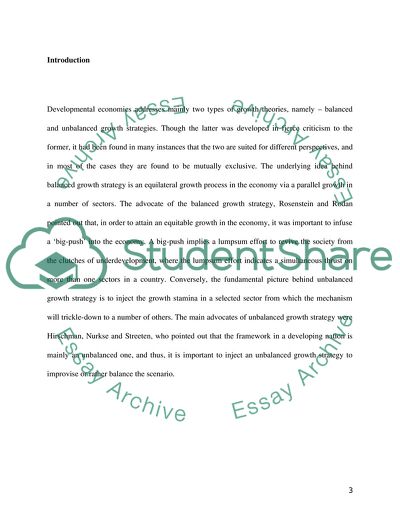Cite this document
(Balanced Versus Unbalanced Growth Essay Example | Topics and Well Written Essays - 1750 words, n.d.)
Balanced Versus Unbalanced Growth Essay Example | Topics and Well Written Essays - 1750 words. https://studentshare.org/macro-microeconomics/1731709-balanced-versus-unbalanced-growth-nature-and-limitations-define-the-terms-in-question-consider-the-underlying-economic-logic-of-each-approachidentify-the-major-criticisms-of-eithercan-a-case-be-made-for-a-strategy-based-on-one-rather-than-the-other
Balanced Versus Unbalanced Growth Essay Example | Topics and Well Written Essays - 1750 words. https://studentshare.org/macro-microeconomics/1731709-balanced-versus-unbalanced-growth-nature-and-limitations-define-the-terms-in-question-consider-the-underlying-economic-logic-of-each-approachidentify-the-major-criticisms-of-eithercan-a-case-be-made-for-a-strategy-based-on-one-rather-than-the-other
(Balanced Versus Unbalanced Growth Essay Example | Topics and Well Written Essays - 1750 Words)
Balanced Versus Unbalanced Growth Essay Example | Topics and Well Written Essays - 1750 Words. https://studentshare.org/macro-microeconomics/1731709-balanced-versus-unbalanced-growth-nature-and-limitations-define-the-terms-in-question-consider-the-underlying-economic-logic-of-each-approachidentify-the-major-criticisms-of-eithercan-a-case-be-made-for-a-strategy-based-on-one-rather-than-the-other.
Balanced Versus Unbalanced Growth Essay Example | Topics and Well Written Essays - 1750 Words. https://studentshare.org/macro-microeconomics/1731709-balanced-versus-unbalanced-growth-nature-and-limitations-define-the-terms-in-question-consider-the-underlying-economic-logic-of-each-approachidentify-the-major-criticisms-of-eithercan-a-case-be-made-for-a-strategy-based-on-one-rather-than-the-other.
“Balanced Versus Unbalanced Growth Essay Example | Topics and Well Written Essays - 1750 Words”. https://studentshare.org/macro-microeconomics/1731709-balanced-versus-unbalanced-growth-nature-and-limitations-define-the-terms-in-question-consider-the-underlying-economic-logic-of-each-approachidentify-the-major-criticisms-of-eithercan-a-case-be-made-for-a-strategy-based-on-one-rather-than-the-other.


